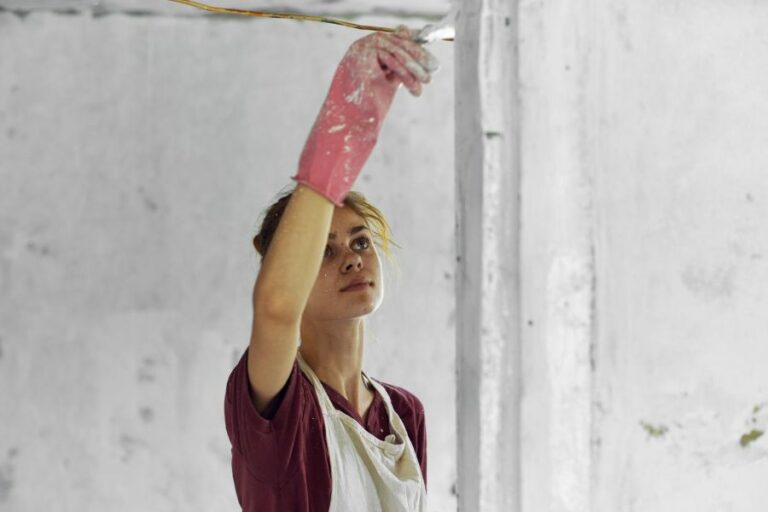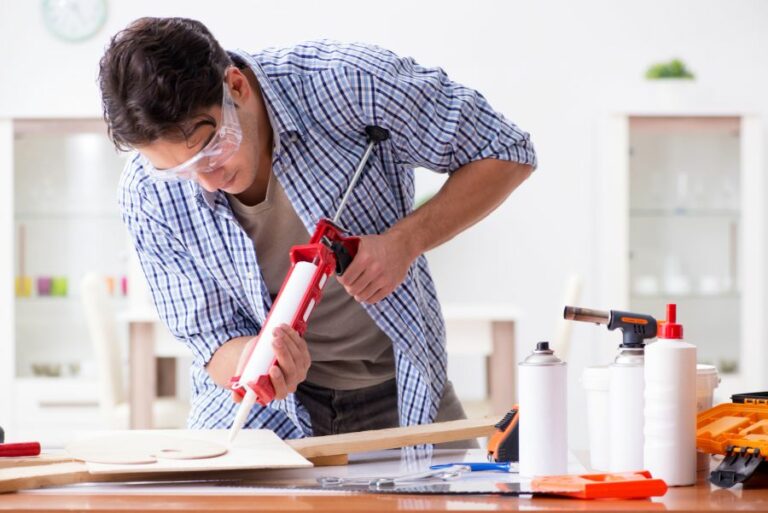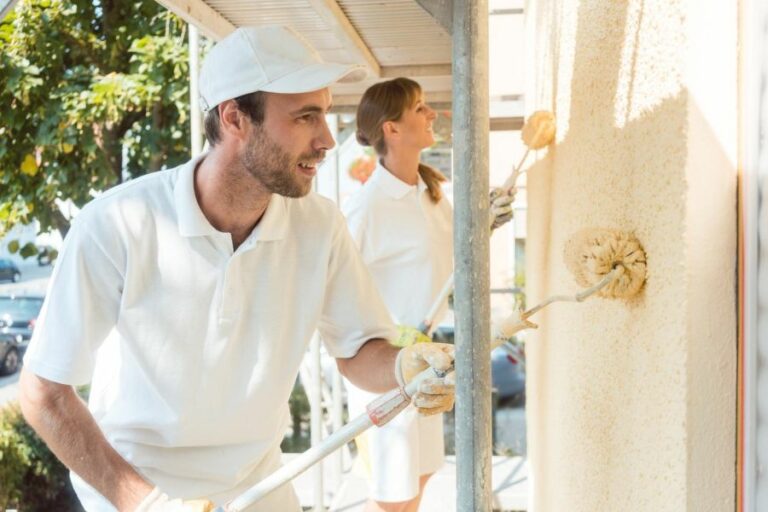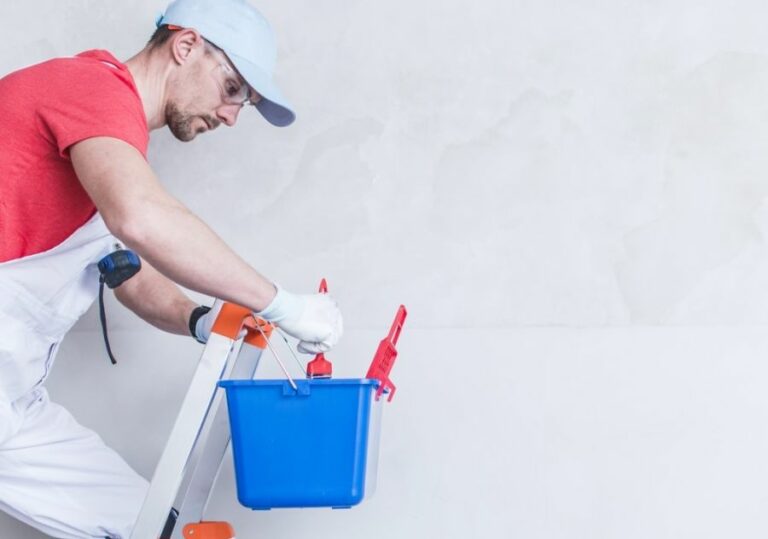Benefits Of Different Abrasives In Surface Prep
As we dive into the world of surface preparation, it’s essential to acknowledge the role of abrasives in achieving optimal results. With various options, selecting the right abrasive for the task can significantly impact efficiency, surface quality, and overall cost implications.
Benefits of different abrasives in surface prep:
Various abrasives in surface preparation offer unique benefits: Aluminum oxide is versatile, durable, and cost-effective, suitable for numerous applications; silicon carbide excels in hardness and sharpness, making it ideal for hard materials; garnet is eco-friendly, reusable, and less dusty; steel grit and shot are aggressive and durable for heavy-duty tasks; and glass beads provide gentle, precise cleaning for sensitive surfaces.

Curious about the benefits of different abrasives in surface preparation? We’ve got you covered! Read on to learn about their unique qualities, applications, and how they can enhance your projects. Join us as we dive deeper into this fascinating world of abrasives; it’s time to up your game!
Contents
- 1 Advantages of Various Abrasives in Surface Preparation
- 2 Exploring the Advantages of Abrasive Materials
- 3 The Significance of Abrasive Blasting in Applications
- 4 Uncovering the Value of Proper Surface Preparation
- 5 Choosing the Ideal Abrasive for Sandblasting Needs
Advantages of Various Abrasives in Surface Preparation
Surface preparation is a crucial step in various industries, such as automotive, aerospace, construction, and metalworking. Selecting the appropriate abrasive for the task at hand not only ensures efficiency but also enhances the quality and longevity of the finished product.
• Aluminum Oxide: A Versatile Abrasive
Aluminum oxide is a widely-used abrasive due to its versatility, durability, and cost-effectiveness. It is an ideal choice for various applications such as deburring, grinding, and sanding.
– Fast Material Removal
Aluminum oxide’s hardness and sharp-edged particles allow for rapid material removal, reducing work time and labor costs.
– Wide Range of Applications
Aluminum oxide can be used on various materials, including metal, wood, and plastic, making it suitable for different industries.
– Reusable and Cost-effective
It can be reused multiple times before losing its effectiveness, contributing to its cost-efficiency. I recommend aluminum oxide for projects requiring high stock removal and general-purpose surface preparation.
• Silicon Carbide: Superior Hardness and Sharpness
Silicon carbide stands out among abrasives due to its impressive hardness, sharpness, and cutting efficiency.
– Ideal for Hard Materials
Silicon carbide’s outstanding hardness makes it perfect for working on hard materials like glass, ceramics, and stone.
– Enhanced Surface Finish
Its sharp grains provide a superior surface finish, critical for applications demanding high precision and aesthetics.
I recommend silicon carbide for surface preparation on hard materials, especially when a smooth, polished finish is desired.
• Garnet: The Eco-Friendly Choice
Garnet is a natural abrasive that offers several benefits, particularly for environmentally-conscious users.
– Environmental Safety
Garnet is non-toxic and chemically inert, making it environmentally safe. Additionally, it produces less dust than other abrasives, reducing air pollution and associated health risks.
– Reusable and Cost-effective
Like aluminum oxide, garnet can be reused multiple times, making it a cost-effective choice for surface preparation.
I recommend Garnet for eco-friendly projects and applications that need a clean, less-dusty environment.
• Steel Grit and Shot: Aggressive and Durable
Steel grit and shot are aggressive abrasives suitable for heavy-duty surface preparation tasks like blast cleaning and the removal of thick coatings.
– High Impact
Steel grit’s angular shape enables an excellent cutting action on hard materials, while steel shot’s round shape creates a smoother surface finish.
– Excellent Durability
Both steel grit and shot offer high durability due to their resistance to breaking, ensuring long-lasting performance.
– Versatility
Steel abrasives can be used on multiple substrates, and users can adjust shot size and hardness levels based on specific project requirements. I recommend steel grit and shot for heavy-duty surface preparation to save time and achieve desired results.
• Glass Beads: Gentle and Precise
Glass beads are a gentle abrasive, perfect for surface preparation tasks that require precision, such as cleaning or peening sensitive surfaces.
– Minimal Material Removal
Glass beads’ spherical shape delivers a soft, clean finish without removing excess material, preserving the integrity of the workpiece.
– Surface Peening
Glass beads are often used for shot peening, which introduces compressive stress into a material’s surface, enhancing its fatigue and stress corrosion resistance.
For delicate surface preparation or peening applications, I recommend using glass beads.
In conclusion, understanding the benefits of different abrasives in surface prep is essential for achieving desired results, improving product quality, and optimizing operational costs.
By selecting the appropriate abrasive, professionals can enhance their surface preparation processes and produce outstanding results.
Experience plays a vital role in choosing the right abrasive, and users must consider factors such as substrate material, desired finish, and project requirements when making a decision.
Exploring the Advantages of Abrasive Materials
Abrasives are essential materials used in various industries, from manufacturing and construction to automotive and woodworking.
• Time and Cost Efficiency
One of the most significant benefits of abrasives is their ability to save both time and money. Abrasive materials are highly efficient at removing small to large amounts of material, which can significantly speed up processes such as cutting, grinding, and polishing.
By using abrasives, businesses can reduce labor costs and time spent on tasks, leading to increased productivity and profitability.
• Enhancing Surface Quality
Abrasives provide a means to condition and enhance the quality of surfaces. By employing a variety of abrasive grains and grit sizes, users can achieve the desired surface finish or texture.
This allows industries to produce high-quality products with a consistent appearance, ensuring customer satisfaction. For example, in the automotive industry, abrasives are used to prepare surfaces for painting or polishing, leading to a smooth, consistent finish.
The woodworking industry also benefits from abrasives, as they can help create an even, polished finish on furniture and other wooden products. Sandpapers, belts, and discs are some of the widely-used abrasive tools in these applications.
• Machining Accuracy and Precision
Using abrasives allows for a higher degree of accuracy and precision in machining processes. Abrasive materials can be used to shape and finish complex geometries and intricate designs with tight tolerances.
This level of control is crucial in industries such as aerospace, where minute imperfections can have significant consequences in terms of performance and safety.
Furthermore, the use of abrasives enables the manufacturing of small and intricate components with higher precision – a critical aspect in industries such as medical devices, where accuracy and precision are paramount.
• Improved Durability
By utilizing abrasives, industries can produce durable and long-lasting products. For instance, the application of abrasive techniques in the automotive industry helps improve engine longevity by ensuring that surfaces are properly honed, reducing friction between components.
Similarly, abrasive processes like shot peening are used to increase the fatigue life of metal components in industries such as aerospace, further showcasing the benefits of abrasives in improving product durability.
• Cleaning and Surface Preparation
Abrasives are invaluable in cleaning and surface preparation for various applications. By removing rust, paint, or other coatings using abrasive media, metal surfaces can be adequately prepared for further processing, such as welding or painting.
Additionally, surface preparation using abrasives can improve adhesion between substrates, resulting in a better-quality bond in processes like gluing or cladding.
• Environmentally Friendly Alternatives
Abrasives can offer environment-friendly alternatives to traditional techniques that may have harmful environmental impacts. For example, abrasive blasting using natural media like walnut shells or baking soda provides a greener option for surface preparation compared to chemical-based methods.
These environmentally friendly abrasives reduce the release of harmful chemicals into the atmosphere and also minimize the overall environmental impact.
• Versatility and Compatibility
Abrasives can work well with a wide range of materials, making them a versatile option for various applications. From metal and wood to glass and plastic, abrasive materials and tools can be used in countless scenarios.
Furthermore, different abrasive types can be combined with various machinery and equipment, like grinding wheels, sandblasting systems, and polishing machines, making them an all-encompassing solution for material removal and surface finishing.
• Recommendations
Based on the numerous benefits and advantages presented above, it is clear that abrasives are a critical resource in various industries. To ensure you’re maximizing these benefits, I recommend the following:
- Choose the appropriate type of abrasive material and grit size for your specific application. This will ensure optimal results and efficient use of resources.
- Maintain your abrasive tools and equipment properly to prolong their life and ensure consistent performance.
- Consider the environmental impact of your abrasives, and where possible, opt for environmentally friendly alternatives.
In conclusion, abrasives are essential materials that offer time and cost efficiency, improved surface quality, machining accuracy, increased durability, effective cleaning and surface preparation, environmentally friendly alternatives, and versatility.
By understanding their benefits and making informed choices, industries can continue to rely on abrasives for their material removal, shaping, and finishing needs.
| Benefits of Abrasives | |
|---|---|
| 1. | Surface cleaning and preparation |
| 2. | Material removal and shaping |
| 3. | Deburring and edge breaking |
| 4. | Surface finishing and polishing |
| 5. | Sharpening and maintaining cutting tools |
| 6. | Grinding and size reduction |
| 7. | Enhancing adhesion of coatings and paints |
| 8. | Increased productivity and cost-effectiveness |
The Significance of Abrasive Blasting in Applications
• An Overview of Abrasive Blasting
Abrasive blasting, also known as sandblasting, is a process where a high-pressure stream of abrasive material is directed at a surface to clean, shape, or remove contaminants.
This technique is widely used in various industries, such as automotive, shipbuilding, construction, and aerospace, to prepare surfaces for painting, coating, or other treatments. Abrasive blasting plays a crucial role in maintaining the quality, appearance, and longevity of various products and structures.
• Types of Abrasive Blasting
There are several types of abrasive blasting techniques, each with its own set of benefits and intended applications.
– Dry Abrasive Blasting
The most common type, dry abrasive blasting, uses compressed air to propel abrasive particles toward the surface being treated. This method is suitable for a wide range of applications, and its effectiveness can be adjusted by selecting the appropriate abrasive material, air pressure, and nozzle size.
– Wet Abrasive Blasting
Wet abrasive blasting, often referred to as vapor blasting, mixes water with abrasive particles to create a slurry. This method reduces dust emissions and can be gentler on sensitive surfaces, making it an excellent choice for cleaning delicate materials or working in dust-sensitive environments.
– Vacuum Abrasive Blasting
This technique incorporates a vacuum system alongside the abrasive stream, collecting spent abrasive and debris as it is removed from the surface. This dust-free method reduces environmental impact and makes the blasting process more efficient by recycling the abrasive material.
• Key Benefits of Abrasive Blasting
– Surface Cleaning and Contaminant Removal
Abrasive blasting is one of the most effective ways to remove rust, scale, paint, and other contaminants from a surface, ensuring that it is clean and ready for subsequent treatments.
Consistent cleaning with abrasive blasting prevents corrosion, increases the adhesion of coatings, and ultimately results in a more durable and longer-lasting finished product.
– Surface Preparation and Profiling
Before applying a coating or paint, surfaces often need to be adequately textured or “profiled” to ensure proper bonding. Abrasive blasting helps create the necessary surface profile by roughening the surface and providing an ideal texture for coatings to adhere to.
This process enhances the appearance, durability, and longevity of paint and coating applications.
– Removing Flash and Parting Lines
In the manufacturing industry, abrasive blasting is employed to remove flash and parting lines from castings, forgings, and molded parts. This process streamlines the appearance of the finished product and eliminates sharp edges, reducing potential hazards and improving overall product quality.
– Restoring and Reviving Aged Surfaces
Abrasive blasting is an effective method for revitalizing aged or weathered surfaces, such as old buildings, monuments, and infrastructure, by eliminating dirt buildup, discolorations, and other signs of aging.
This treatment can improve the appearance and structural integrity of older surfaces, prolonging their functional life.
• Choosing the Right Abrasive Material
Selecting the correct abrasive material for a specific application is crucial in achieving the best possible results. Factors to consider when choosing an abrasive material include the hardness and type of surface being treated, the desired surface profile, and environmental factors.
Common abrasive materials include:
- Sand: Suitable for general-purpose blasting, but due to health risks associated with silica dust, other materials are often recommended.
- Garnet: A natural, non-toxic abrasive with low dust emissions, ideal for cleaning non-ferrous metals and maintaining sensitive equipment.
- Steel Grit: Aggressive media that quickly remove heavy rust and paint, often used in steel and foundry industries.
- Glass Beads: Gentle abrasive, perfect for cleaning and peening without causing dimensional changes or damaging the treated surface.
• Safety and Environmental Considerations
Abrasive blasting can pose various risks to both operators and the environment if not adequately managed. Proper protective equipment, such as respirators, gloves, and blast suits, should be worn by the operator to minimize exposure to airborne particles and reduce the risk of injury.
Additionally, when conducting abrasive blasting operations, consider environmental regulations and best practices. This includes managing dust emissions, properly disposing of spent abrasive materials, and using environmentally friendly blasting media.
• Conclusion
Abrasive blasting is an indispensable technique with numerous applications and benefits across various industries.
By understanding its importance, carefully selecting the appropriate abrasive material, and following safety and environmental guidelines, abrasive blasting can significantly enhance the quality and lifespan of various surfaces.
As a resource for further information, consider visiting the NACE (National Association of Corrosion Engineers) website, where you can find comprehensive information on abrasive blasting and other corrosion control techniques.
Uncovering the Value of Proper Surface Preparation
Surface preparation is a critical step in many industries, including construction, automotive, aerospace, and manufacturing. By ensuring proper surface readiness, numerous benefits are achieved, such as improved adhesion, increased coating durability, and reduced defects.
• Enhanced Adhesion and Bonding
One of the primary benefits of thorough surface preparation is enhanced adhesion between the substrate and the applied material, such as paint, adhesive, or coating.
Proper cleaning and treatment of surfaces ensure better bonding, reducing the likelihood of peeling, cracking, or separation in the long run.
For example, in the automotive industry, surface preparation is essential before applying primer or paint to car bodies.
Similarly, aircraft structures require surface treatment before applying sealants or adhesives. In both cases, enhanced adhesion is critical for safety, longevity, and aesthetic appeal.
I recommend utilizing appropriate surface preparation techniques, such as sanding, grinding, or abrasive blasting, to remove contaminants and improve bonding with applied materials.
• Increased Coating Durability and Performance
Another significant advantage of surface preparation is the ensuing coating durability and performance enhancement. Coatings, such as paint, primer, or corrosion-resistant materials, are used to protect and prolong the life of various surfaces.
However, without proper surface preparation, the coating may not perform as intended or may prematurely fail.
For instance, in the construction industry, surface preparation is crucial before applying protective coatings to steel structures. By removing rust, mill scale, and other contaminants, the coating can adhere tightly to the surface, providing lasting protection against corrosion.
From my experience, following industry-specific guidelines and using suitable surface preparation equipment will make the difference in coating durability, saving time, resources, and potential future maintenance costs.
• Reduction of Surface Defects and Contaminants
Surface preparation plays a crucial role in reducing and eliminating surface defects, such as scratches, dents, rust, and contaminants like dirt, oil, or grease.
These surface imperfections can impede coating or adhesive application and compromise the finished product’s quality, appearance, and performance.
For example, in the semiconductor manufacturing industry, surface cleanliness is critical, as even the tiniest contaminants can adversely affect the final product’s performance.
Proper surface preparation techniques, such as ultrasonic cleaning or solvent-based cleaning, are necessary to ensure defect-free substrate surfaces.
I suggest researching industry best practices and selecting appropriate cleaning agents and equipment to reduce surface defects and enhance productivity.
• Safety and Environmental Protection
Proper surface preparation procedures contribute to workplace safety and environmental protection. By removing hazardous materials such as lead-based paint or asbestos, workers are protected from harmful exposure, and the environment is safeguarded from potential contamination.
I recommend adhering to local and national regulations for hazardous material removal and disposal to ensure worker safety and environmental protection.
• Improved Aesthetics and Finishing Quality
Lastly, surface preparation significantly benefits the aesthetics and finishing quality of various products. By adequately preparing a surface and removing contaminants and defects, the applied material’s uniformity, gloss, and appearance are improved.
For example, in the furniture industry, surface preparation is vital before applying varnish or paint, ensuring a smooth and visually appealing finish.
My advice is not to overlook the importance of surface preparation when aiming to achieve professional-looking results in any project.
In conclusion, the benefits of surface preparation are numerous, encompassing improved adhesion, increased coating durability, reduction of defects, enhanced safety, and superior aesthetics.
By employing the appropriate techniques and equipment, industries can save time and resources while delivering high-quality products.
For further information on surface preparation and its importance, consult reliable sources such as NACE International or SSPC, both specialized in corrosion control and protective coatings.
No. | Benefit |
|---|---|
1 | Creates a clean surface for better adhesion of coatings or treatments |
2 | Removes dirt, grease, and other contaminants to improve the final appearance |
3 | Improves the durability and lifespan of the applied coatings or treatments |
4 | Helps in identifying surface defects and flaws that need repair |
5 | Enhances the efficiency of further processes, such as painting or plating |
6 | Prevents corrosion, blisters, or peeling of the surface |
7 | Ensures the safety and compliance with standards and regulations |
Choosing the Ideal Abrasive for Sandblasting Needs
Sandblasting is a versatile technique used in various industries for cleaning, stripping, shaping, and finishing surfaces. The effectiveness of this process depends on the type of abrasive material used.
Making the right choice of abrasive is key to achieving the desired outcome, improving productivity, and reducing costs.
• Understanding Abrasives for Sandblasting
Abrasives are hard materials that are used to wear down or remove surface materials through impact, high pressure, or friction. Sandblasting, also known as abrasive blasting, works by propelling these abrasive materials at high speed onto surfaces using a blast machine.
The type of abrasive used determines the cleaning and removal rate, surface finish, and the overall outcome of the blasting process.
– Types of Abrasives
There are various types of abrasives used in sandblasting, each with its own properties, advantages, and disadvantages. Some commonly used abrasives include:
- Silica Sand: The traditional and most common abrasive, it is cheap and widely available. However, it can be hazardous to health as a result of silica dust inhalation.
- Steel Grit: A highly durable abrasive made of angular steel particles, it is effective in removing paint, rust, and contaminants at a fast rate.
- Glass Beads: Made from crushed glass, they create a smooth, polished finish without significant material removal.
- Aluminum Oxide: A highly aggressive and sharp abrasive, it is suitable for etching, cleaning, and removing tough rust and scale.
- Garnet: A natural, non-toxic abrasive with medium hardness that offers a precise, clean, and less abrasive finish.
- Corn Cob and Walnut Shell: Soft, biodegradable abrasives that are ideal for delicate surfaces like wood and thin metals, as they cause minimal damage.
- Plastic Abrasives: Synthetic abrasive particles that are softer than metal abrasives; they are effective for stripping paint and coatings without damaging underlying surfaces.
- Sodium Bicarbonate (Baking Soda): A versatile, gentle abrasive that can remove tough grease, oil, and contaminants while preserving delicate surfaces.
- Dry Ice: A non-abrasive blasting medium that uses CO2 to create cold temperatures and pressure, ideal for cleaning sensitive equipment and surfaces.
– Factors to Consider When Choosing the Best Abrasive for Sandblasting
- Surface Material and Condition: Different surfaces require different abrasives based on their hardness, material type, and contamination level.
- Desired Surface Finish: Abrasives can create different finishes ranging from aggressive surfaces to smooth polished surfaces, depending on your requirements.
- Cost and Availability: The cost and availability of an abrasive can affect your project’s outcome and productivity, so choose according to your budget and supply constraints.
- Environmental and Health Concerns: Consider abrasives that are safe for the environment and human health, especially when working in confined spaces.
- Reuse and Disposal: Some abrasives can be reused multiple times before losing their effectiveness, reducing overall cost and waste disposal.
• Recommended Abrasives for Different Applications
Stripping Heavy Coatings and Rust: For aggressive surface cleaning and preparing metal, steel grit and aluminum oxide are the best choices. Both abrasives have high cutting rates, durability, and recyclability.
Delicate Surface Cleaning: For sensitive and delicate surfaces, corn cob, walnut shell, plastic abrasives, or baking soda are ideal options to prevent damage to the substrate.
Surface Polishing and Finishing: To achieve a smooth, polished finish, glass beads are recommended. They remove contaminants without significantly removing the base material.
Environmentally Friendly Option: Garnet, being a natural and non-toxic abrasive, is ideal for achieving a precise, clean finish without causing harm to the environment or the operator’s health.
• Final Thoughts
The best abrasive for sandblasting is not a one-size-fits-all answer, as it depends on each project’s specific requirements, surface material, and desired outcome.
Understanding the properties of different abrasives, and considering factors such as cost, environmental impact, and reuse, will help you make an informed decision. By choosing the right abrasive, you can improve the overall efficiency, productivity, and results of your sandblasting process.
Abrasive Type | Pros | Cons |
|---|---|---|
Garnet | High performance, reusable, safe for the environment | Higher cost |
Aluminum Oxide | Sharp, durable, reusable, and suitable for hard surfaces | Expensive, not suitable for soft surfaces |
Glass Beads | Environment-friendly, reusable, gentle on surfaces | Not suitable for tough surface cleaning or paint removal |
Silica Sand | Low cost, effective in removing paint and rust | Health hazard, damaging to the environment |
Steel Grit | Fast-cutting, reusable, aggressive cleaning | Expensive, not suitable for soft surfaces or delicate jobs |







